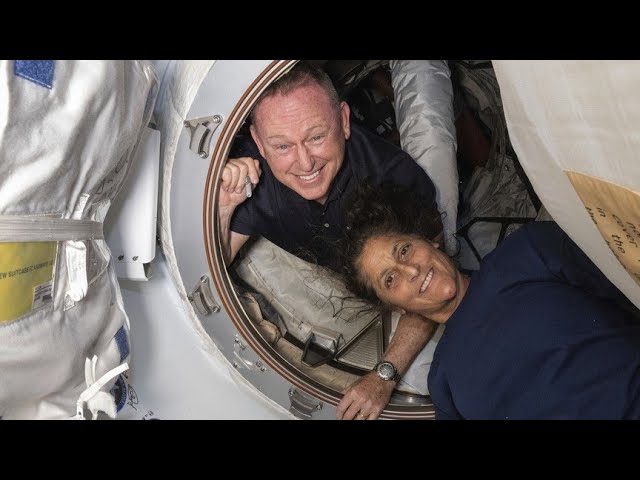Stranded since June, astronauts Butch Wilmore and Suni Williams will return on a SpaceX craft in February following issues with Boeing’s Starliner capsule
NASA has confirmed that astronauts Butch Wilmore and Suni Williams, who have been stranded aboard the International Space Station (ISS) since early June, will not return to Earth until February 2025. The decision was made after multiple technical failures with Boeing’s Starliner capsule, which had initially been scheduled to bring the astronauts back after a week-long test flight.
The Starliner mission, meant to be a significant milestone for Boeing’s space program, has faced a series of setbacks, including thruster failures and helium leaks. These issues led NASA to deem the return journey too risky, ultimately deciding to wait until SpaceX’s next crewed mission to bring the astronauts home.
NASA’s top officials, including Administrator Bill Nelson, emphasized that the decision prioritizes safety above all else. The two astronauts will now return aboard a SpaceX capsule in February, after an extended stay on the ISS. Their empty Starliner capsule is scheduled to undock and return autonomously in early September.
Boeing’s Starliner program, already plagued by delays and cost overruns, has faced significant scrutiny as a result of these ongoing issues. Despite these challenges, NASA remains committed to the program, expressing confidence that Starliner will fly again.
The astronauts have expressed support for NASA’s decision and continue to contribute to ISS operations during their extended mission. The situation has underscored the complexities and risks of space travel, particularly in the testing of new spacecraft.
Analysis:
Technical Perspective: The delay in the return of astronauts Butch Wilmore and Suni Williams highlights the technical challenges that have plagued Boeing’s Starliner program. The repeated thruster failures and helium leaks are significant issues that have raised concerns about the capsule’s reliability and safety. These problems are particularly troubling given the critical role of thrusters in maintaining the spacecraft’s orientation during reentry. The decision to use a SpaceX capsule for the astronauts’ return underscores the importance of redundancy and competition in space exploration, as NASA relies on multiple partners to ensure mission success.
Economic Perspective: The ongoing issues with the Starliner program have had significant financial implications for Boeing. The company has already spent over $1 billion addressing design flaws and delays, and the latest setbacks could further strain its budget. Additionally, Boeing’s struggles with Starliner have tarnished its reputation in the space industry, particularly as SpaceX continues to successfully execute crewed missions. The financial and reputational impact of these delays could have long-term consequences for Boeing’s role in future NASA missions and other space endeavours.
Strategic Perspective: NASA’s decision to delay the return of the Starliner astronauts reflects a broader strategy of prioritizing safety in all its missions. The agency’s willingness to delay the mission, despite the costs and challenges involved, demonstrates its commitment to avoiding another tragedy like the Columbia disaster. NASA’s continued support for Boeing, despite the setbacks, also shows its dedication to maintaining multiple providers in its commercial crew program, ensuring that it is not overly reliant on a single company. This strategic approach helps mitigate risks and promotes innovation in the rapidly evolving space industry.
Social and Human Perspective: For the astronauts and their families, the extended mission is undoubtedly challenging. Wilmore and Williams have demonstrated remarkable resilience and professionalism in the face of uncertainty, continuing their work on the ISS despite the prolonged mission. Their experience highlights the human element of space exploration, where the risks and rewards are deeply personal. The situation also emphasizes the importance of clear communication and support for astronauts’ families, who must cope with the stress and uncertainty of extended missions.
Future Outlook: Looking ahead, NASA and Boeing will need to address the technical issues with Starliner before it can be considered safe for future crewed missions. The success of the autonomous return in September will be a critical step in rebuilding confidence in the spacecraft. Meanwhile, SpaceX’s continued success with its Crew Dragon capsule reinforces its position as a reliable partner for NASA. The space agency’s commitment to having multiple providers ensures a competitive environment that can drive innovation and improve safety in human spaceflight.
